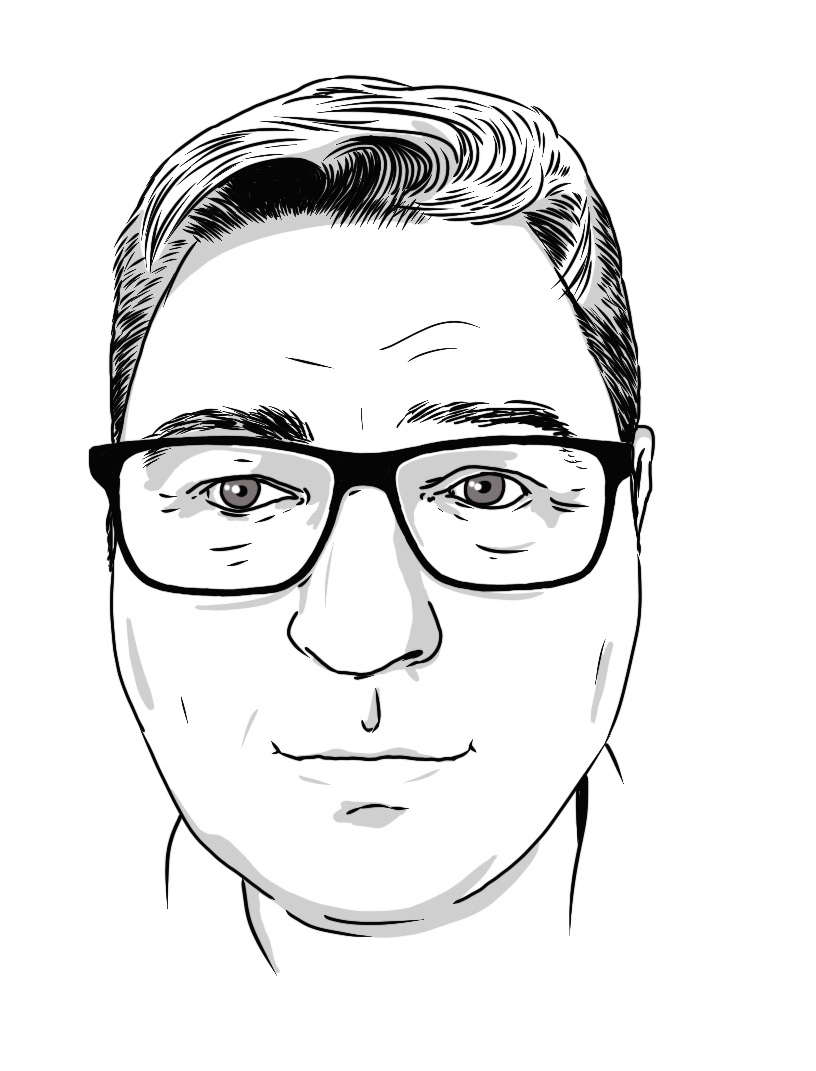June 2, 2024
A brief history of the future of work
 The past few years and our current predicaments should serves as a reminder of that tragic, unchangeable feature of the human condition, best expressed by Kierkegaard, that we are doomed to live our lives forwards but only understand them backwards. Retrospect is particularly important when we look back on sudden, large changes that knock us off our normal path. It’s important to remember this as we continue to grapple with the nature of the present and future of work in the wake of the pandemic.
The past few years and our current predicaments should serves as a reminder of that tragic, unchangeable feature of the human condition, best expressed by Kierkegaard, that we are doomed to live our lives forwards but only understand them backwards. Retrospect is particularly important when we look back on sudden, large changes that knock us off our normal path. It’s important to remember this as we continue to grapple with the nature of the present and future of work in the wake of the pandemic.
A taxonomy of change has emerged in recent years to describe such events. The best known is the ‘Black Swan’, coined and popularised by Nassim Taleb as things that “seem to us, on the basis of our limited experience, to be impossible” but which happen anyway, have a major impact and are often rationalised later.
Then there are ‘Gray Rhinos’, those things we can see coming and are to be expected according to the author Michele Wucker who coined the term, but often don’t. Finally, there are ‘Dragon Kings’, which describe events that have major impacts in complex systems, but which might be predicted, unlike Black Swans.
How you categorise the events of the last three years or so within this taxonomy is debatable. One thing that is likely to happen in their wake, and indeed already is happening, is a surge of apocalyptic and utopian thinking. When old certainties totter and crumble, we reach for the reset button.
When old certainties totter and crumble, we reach for the reset button
The Internet and other media have allowed this to take place immediately while events were still unfolding, but in the early to mid 20th Century the responses to the paroxysms of the age were expressed on the page, and drew themselves out over many years.
In Dorian Lynskey’s The Ministry of Truth, a “biography” of Nineteen Eighty-Four, the author describes how Orwell’s book was the end point of an obsession with utopian (and ultimately dystopian) fiction that characterised the first half of the Twentieth Century, and reflected the competing political, social and economic ideologies of the era.
Although rooted in the Victorian age and a yearning for a better society, such works were given fresh impetus by the horrors of the Great War. By the time the Second World War ended, this yearning had found new outlets, most notably in a newfound optimism amongst people who never wanted to live through anything similar again.
The consensus
This manifested itself in consensus in the Western world about international cooperation, liberal economics, state investment in infrastructure and rebuilding, progressive taxation and a sense of shared social responsibility. This was the era that forged the NHS, Welfare State, Common Market and the Wirtschaftswunder and embraced Modernism, and celebrated technological innovation and scientific achievement.
An earlier literary work may have more resonance for our current situation. In 1909, E M Forster – not exactly known for a body of work including dystopian fiction – published a novella called The Machine Stops. You can read it online but the story describes a future in which people live below ground, in isolation but with all their needs met by an omnipresent Machine.
I want to see you not through the Machine. I want to speak to you not through the wearisome Machine
People are allowed to travel, but tend not to and instead communicate and share ideas entirely through technology. Some are not satisfied with this life, including the protagonist Kuno who on a call to his mother says “I want to see you not through the Machine. I want to speak to you not through the wearisome Machine.”
As so often in this kind of fiction, Kuno rebels against the strictures of society, visiting the surface without permission to find people living without the Machine. Soon, those in isolation are forbidden from travelling to the surface completely and the Machine becomes the quasi-religious focus of life for those below ground.
Over time the Machine starts to develop defects and eventually fails completely, taking civilisation with it, leaving the main characters to conclude that people should never have left behind their connections with each other and the natural world.
Yearning for a past that never was
There are obvious parallels between this and our current circumstances, but there are always problems with this kind of narrative, not least its underlying conservatism and yearning for a possibly mythical past.
However, it’s also possible to discern the religion of tech – what Forster calls Technopoly in the story – in some of the reactions to life and work under lockdown. We shouldn’t dwell on these except to say that the problems with some of the claims being made for a world of isolated individuals connected almost entirely by tech are the same now as they were in Forster’s imagination over a hundred years ago.
The most effective strategy for innovative work requires agility, flexibility and optionality for the work at hand
These are often driven by vested interests and draw entirely the wrong conclusion about where we go from here. Fortunately, some better and already developed narratives are gaining widespread acceptance as we continue to explore the future of work. These acknowledge the benefits of isolation while also highlighting the advantages of travelling to the surface, even though what we find there should be different to what we once knew.
Many workplace commentators are refreshing their existing ideas about how we blend the different times and places we work into something that takes advantages of their different pros and cons.
Lisa Picard makes the point clear in an article on Medium, arguing that we don’t need to choose between the Machine and the surface. We can have both.
“The future of work isn’t fully distributed or remote as we see the tactics emerge,” she writes. “The most effective strategy for innovative work requires agility, flexibility and optionality for the work at hand (i.e. we produce creative products, ideas) — also called work from anywhere. Clearly organizations, leaders and the workforce is looking for a point of view and a direction, not just grandstanding. Understanding which trends emerging are short-term (fear subsiding) or systemic is paramount to the future of work and our cities.”
This raises questions about the complacency we have developed about many things we once fought for. Certainly, it has demonstrated who the key workers really are, who is most at risk, the fault lines between people’s lives and work and how politicians view them, the inadequacies of some technological infrastructure, and how dependent we are on each other and the complex systems that meet our needs.
The environment
It has also raised questions about the impact of travel and daily life on the environment by showing what happens when we don’t do as much. It has introduced politicians of all parties to the new realities of working life for many people, especially those who are self-employed or in precarious “gig economy” work.
We are invited to reassess the world we have created and what we should be doing better and especially for those most at risk of crises. As we peer out on the world from our isolation, we might have similar thoughts to those of the author Michael Morpurgo, who argued recently that the UK in particular has become a nation defined by its divisions and the pandemic means we have been given the unexpected chance to heal them.
The atomistic billiard-ball model of the person is biologically ludicrous and sociologically unsustainable
We might share a wish list similar to that of Charles Foster writing in The Conversation which includes this plea: “The atomistic billiard-ball model of the person – a model that dominates political and ethical thinking in the west – is biologically ludicrous and sociologically unsustainable. Our individual boundaries are porous. We bleed into one another and infect one another with both ills and joys. Infectious disease is a salutary reminder of our interconnectedness. It might help us to recover a sense of society.”
Pandemics, like all upheavals, reveal structural weaknesses at pace and scale. But they also highlight the opportunities we have to do something better. Writing in the FT, the author Yuval Noah Hari argued that we must embrace the opportunity we have to create a better world.
“Humanity needs to make a choice,” he wrote. “Will we travel down the route of disunity, or will we adopt the path of global solidarity? If we choose disunity, this will not only prolong the crisis, but will probably result in even worse catastrophes in the future. If we choose global solidarity, it will be a victory not only against the coronavirus, but against all future epidemics and crises that might assail humankind in the 21st century.”
The role of work
We are invited to consider the future of work as part of this shift. But all too often, this is being presented as a zero-sum game with people swapping the office for the home. In practice, this may mean we could well be swapping one set of pros and cons for another.
Commuting at the same time as everybody is often a ridiculous and anachronistic thing to do but so too, for many people, is locking themselves away in a home office or dining room with its isolation, lack of ergonomics and amorphous routines. Both extremes continue to slug it out in the tedious binary spat about the future of work.
The office of the future is not a single location; it is a network of spaces and services
What we can expect is a new balance between physical and digital space as more people and businesses embrace the potential of remote work for the first time. It also presents an opportunity for workplace managers to emphasise their importance to the growing number of organisations who will be prepared to adopt more agile and distributed workplace cultures.
The most likely outcome of this new era will not be no offices, but better, fewer and smaller offices. These will be integrated into a new system of work which takes place in different times and places depending on people’s needs and those of the organisation.
As Dror Poleg writes in his book Rethinking Real Estate, published pre-pandemic but more relevant than ever, “The office of the future is not a single location; it is a network of spaces and services”.
Whenever the machine stops and we visit the surface again, this is the most important lesson we can take from our lives underground.
As people are now fond of saying but shouldn’t, we are in a new normal. If that’s the case, let’s make it a better one. In particular, let’s use it as an opportunity to develop better habits and display better ethics. Let’s rediscover our connections with others and create better spaces to share with them, whether they are on the surface or in the machine.
This feature is taken from issue 7 of IN Magazine

Mark is the publisher of Workplace Insight, IN magazine, Works magazine and is the European Director of Work&Place journal. He has worked in the office design and management sector for over thirty years as a journalist, marketing professional, editor and consultant.
Image by prettysleepy1














